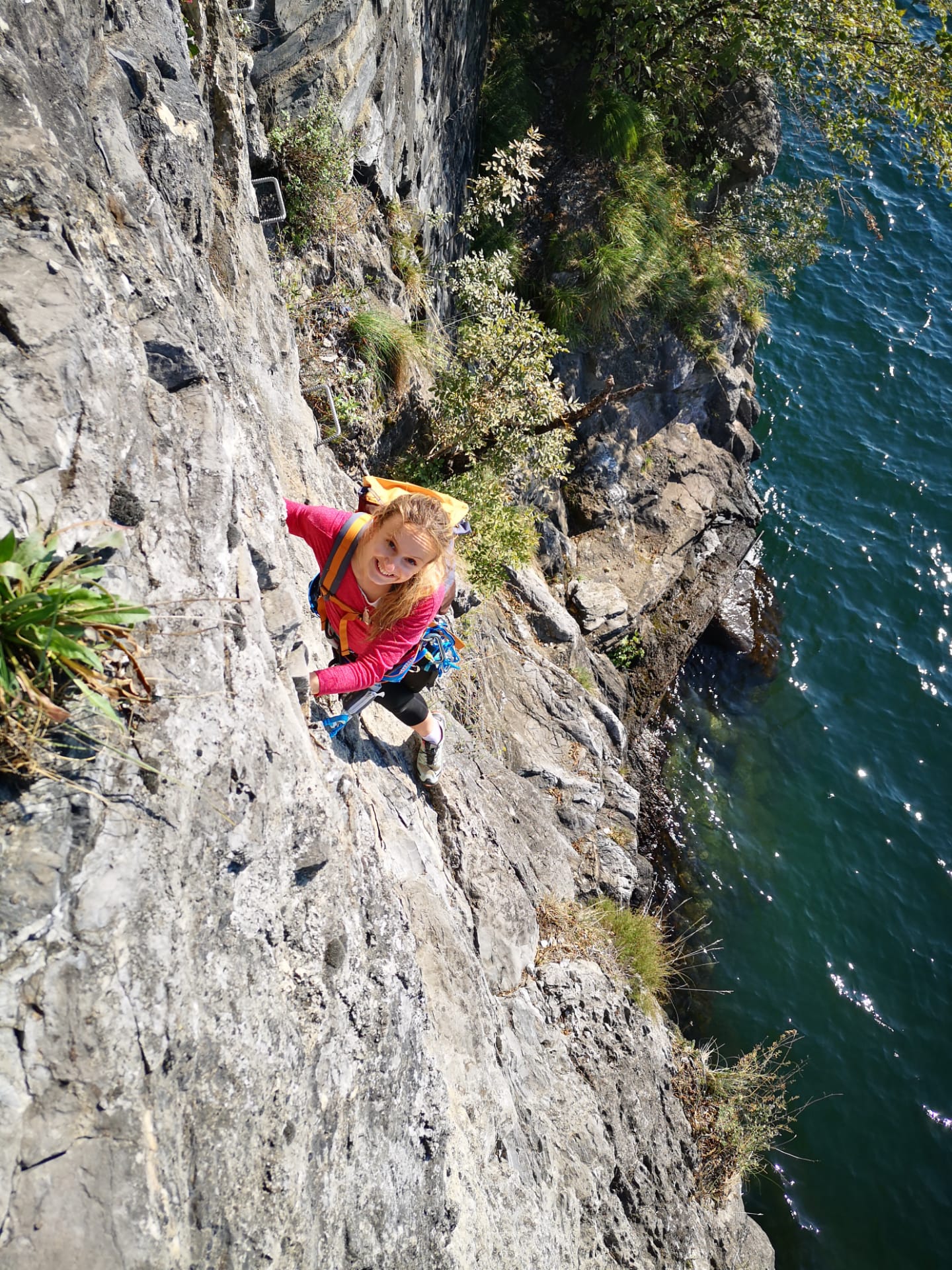We at on the doorstep are keen climbers and have a suitably large collection of gear to go with our status. If you know any climbers, you will know it’s nothing short of cultish the organisation, maintenance and acquisition of various different carabiner, ropes, clips, cams, the list could go on. So when I thought about embarking upon a Via Ferrata, I wasn’t surprised to learn that there would be some new gear involved. Because what’s a climb unless there is new gear?

Helmet
I’ll start with safety first because y’know, let’s be sensible here too. A helmet may seem like a health and safety obsessed British addition, but the risk of falling stones, clips or metal is relatively high with a via ferrata route, especially in some mountains. Make sure you’ve got your noggin covered.
Harness
Not in most people’s wardrobes unless you’re already a seasoned climber. A harness (well fitting and with a belay and ideally waist loops) is needed to attach you and your clips to the via ferrata.
Via Ferrata Clip
Now we’re talking. You might be wondering, what’s the difference between a climbing quick draw, or a simple sling-carabiner fix up? The answer takes us back to high school physics. If you take a fall on a via ferrata, the forces exerted are much greater when there is no rope and quick draw anchors to absorb the shock. The force of the fall needs to go through a ‘bundle’ on the via ferrata specialised clip, which unravels, soaking up the shock of any fall. The apparel loops through your belay hook on your harness, with the two carabiners hanging off.

Length of Rope
It is always advisable to have a length of rope with you in case of emergencies. It can be relatively short, it just allows your clips to fail, you to come to the rescue in an emergency, use it as a winch for a small animal.. whatever, you get the idea.
Rucksack
Obviously you might be thinking, a rucksack is a given on any hike or climb, where do you put your food?! Ideally though your rucksack needs to be relatively light and if possible, flush to your back with some waist and// or chest support. As you’re climbing ladders which may be overhung, you need to make sure nothing is unduly pulling you backwards, like a poorly packed or ill fitting rucksack.
Hiking Boots
Again this might seem obvious, but it is the grip that is really key. Ideally you need a Vibram sole, or shoes with reliable grip, that aren’t simply running trainers. Some of the paths, and then the metal rungs, can be really slippy. It can also be pretty sore underfoot if you haven’t got a rigid based shoe, as you’re perching on thin bars for a big chunk of the day.

Lightweight clothes
You shouldn’t embark on a via ferrata if the forecast is particularly wet or stormy, for the clear reason that you’re about to cling to a metal structure on an exposed cliff face. However, you may well find that the descent and the photo opportunities at the top mean you get a little cold, so a fleece or lightweight windproof jacket equivalent is never a bad idea.
Water Vessel
I’ve written vessel not because i’ve gone to 1920’s England, but because I prefer a camelback, so that you can continuously drink. Some people are happy to take a break, bother their mate to get their bottle out and carry on. Each to their own.
There isn’t oodles of new gear required for a via ferrata, the key thing is the specific shock absorbing via ferrata clip. This will be crucial if you do slip and doesn’t look too shabby next to your other various harnesses and the like if you’re in the market for acquiring all the gear. Happy hikes, you won’t regret it!


Pingback: Via Ferrata Picasass- Lake Maggiore from a different angle – On The Doorstep